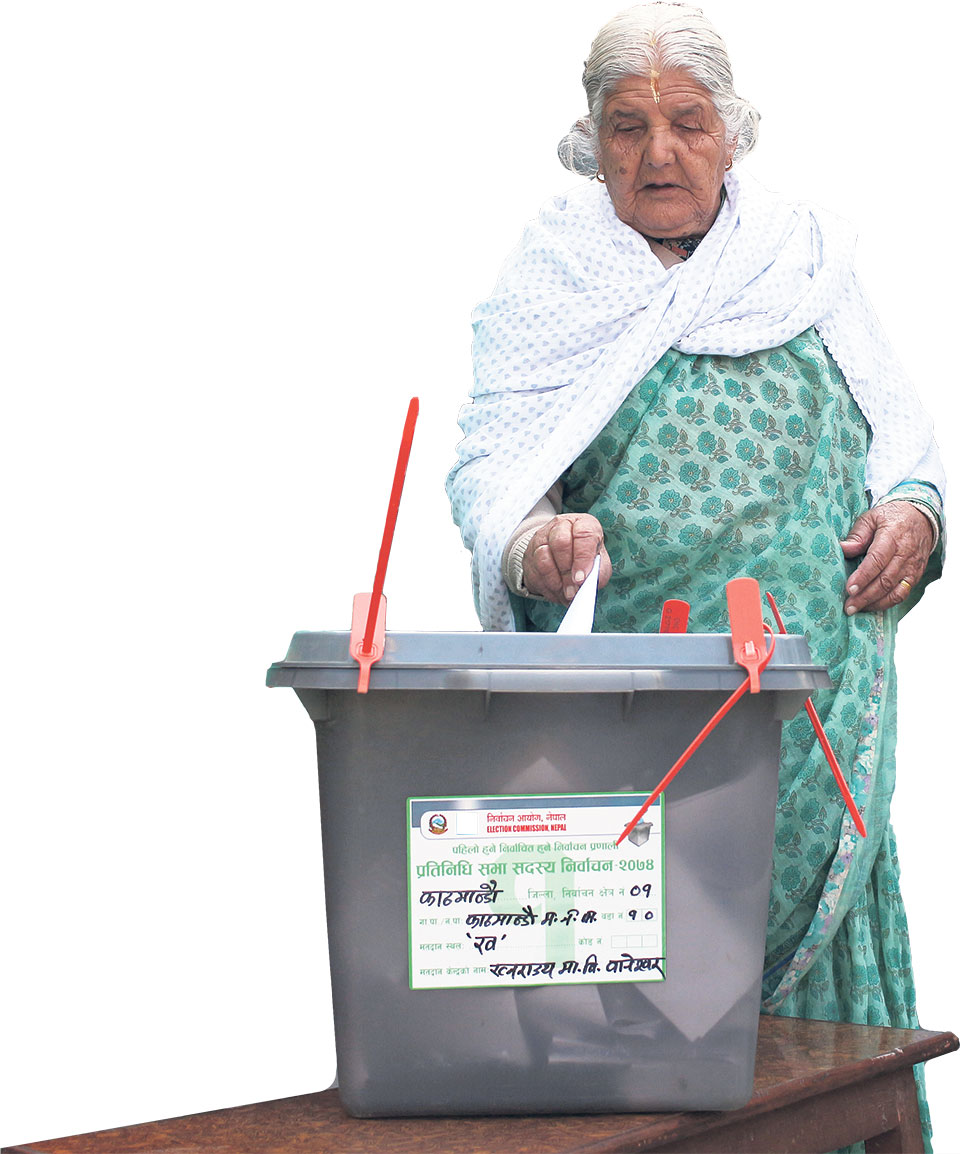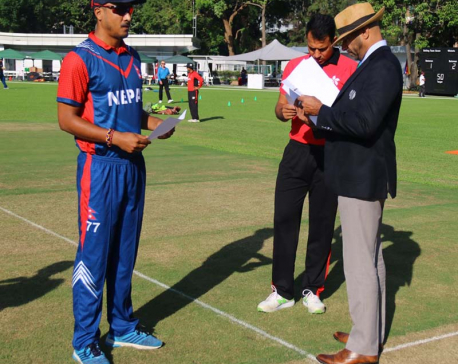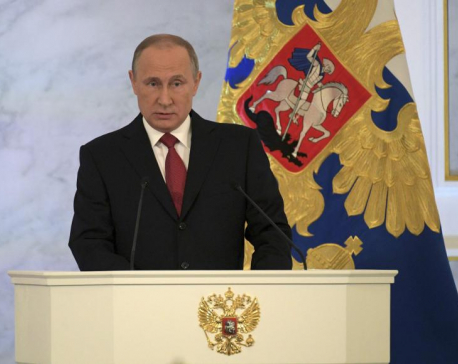
OR
COVER STORY

The constitution of the new federal democratic republic of Nepal was promulgated on September 20, 2015, with some significant changes to the old political system. As per the new statute, efforts have been made to create federal structures and autonomous local bodies. One such effort was the recently held elections for provincial assemblies and federal parliament.
Going into the elections, political parties had unrealistic manifestos. Most parties also promised a complete transformation of our country in as little as five years of adopting a federal structure. These manifestos revealed the incompetence of political parties to understand the division of power between the center and the provincial governments under an entirely new system of governance.
During the elections, election candidates portrayed federalism as the solution to all existing problems. However, few efforts were actually made to institutionalize this new structure.
Now that representatives for the provincial states have been democratically elected, there is an urgent need to work towards implementation of the new federal system. First, provincial parliamentary buildings need to be built where our elected representatives can debate and deliberate. Likewise, other subordinate organs have to be formed at the province level for smooth functioning of provincial assemblies.
Concrete executive and judicial bodies also have to be set up as soon as possible so that the federal structure can take shape. Shiva Paudel, assistant professor at Kathmandu University School of Law, says a sound judicial system is an integral feature of federalism but in the present scenario management of the provincial judicial system is not a government priority.
“The new constitution provides for seven high courts in seven different state headquarters but no one knows where the provincial headquarters will be. Although the Supreme Court in Kathmandu has already allocated judges and staffs for these seven regions, judicial infrastructure for these employees can be built only when state headquarters fixed,” says Paudel.
To further delay this already complicated process, disagreements over setting up federal infrastructures are already surfacing. “Powerful politicians at the state level are now in a mood to set up provincial headquarters as it benefits their political careers,” says Paudel. “These disputes will take a long time to resolve,” he adds.
Likewise, financial institutions, cooperatives, government funds allocation system and accounting system are also not in place. Arjun Prasad Pokhrel, spokesperson at the Ministry of Finance, says that temporary offices are being set up and government staffs also being deputed on temporary basis for smooth transition from unitary to federal system.
“Our duty is to give provincial financial bodies basic guidance. We do not have the power to impose anything. This interim management by the finance ministry is to ensure that there is no vacuum during the transition and that the finances of these federal bodies are not left in a state of chaos,” says Pokhrel. However, according to him, unless the state headquarters are in place, it is difficult to create permanent financial infrastructures.
Revenue collection is another challenge at the provincial level. Dr Tok Raj Pandey, spokesperson at the Department of Transport Management, says, “Till date there is no mechanism to collect transport revenue at the provincial level. It is an extremely complicated process and it will take at least a year to implement. But implementing these new laws will require effective guidance and quick decision making.”
Dhan Prasad Pandit, professor of Political Science at Tribhuvan University, believes that local bodies’ monitoring of quality of education is one of the most challenging tasks. “Our constitution has provided enormous power to local bodies with respect to education. Each local body has the authority to monitor high school and maintain quality education. But with the limited human recourses and insufficient infrastructure, I doubt these local bodies can be efficient,” says Pandit. “They may succeed in maintaining a minimum standard of education but it will certainly take more than five years for these bodies to be really effective,” he adds.
Then there is the question of providing better healthcare to all Nepalis. “Healthcare facilities and hospitals are now the concern of provincial bodies. But we don’t have enough doctors to serve in each province. Even basic healthcare facilities are missing in many parts of the country. I do not see how federalism will deliver on its promises in the next five or ten years,” says Monika Mahat, who has just completed her MBBS.
A large amount of budget is required for the establishment of these federal infrastructures. This makes allocation of provincial budget another challenging task. Different states will generate different amounts of revenue, which could create conflict. Some states in the Tarai region may be rich while others may suffer from insufficient resource endowments.
According to assistant professor Pokhrel, the biggest disagreements between the center and the provinces will be over sharing of political and administrative power. “In federalism, the center is never superior to the state. The center will now have to devolve various powers such as that of healthcare, education, and revenue collection to the state. There is thus a high chance of tussle over resources between the center and the provinces,” says Pokhrel.
Nevertheless, this new federal system has also brought a sense of optimism. “I’m sure these provincial governments will be more accountable and transparent. I’m happy now that I do not have to travel all the way to Singha Durbar just to exercise my right to information,” says Chahaha Shah who lives in Nepalgunj.
While on one hand there are worries about this new political system, on the other, there is anticipation of more efficient governance. “Human resources will also be managed more efficiently in the federal structure. I hope the provincial governments can live up to people’s expectations and create a welfare state,” says Pratima Mudbhari, a social worker.
A federal structure encourages people participation and gives them a sense of ownership of state policies. Federalism, done well, will also bridge the gap between the citizens and the state, making it easier to solve local issues at the local level. How new policies are shaped will determine the future of our federalism, but it will also be the responsibility of each citizen to check and question the government at each step and make them accountable. Again, along with apprehensions, this new political system has also come with many hopes.
swasti30@gmail.com
You May Like This

German zoo hopes to cure panda's bad walking habit with sex
BERLIN, Oct 26: Zookeepers at Berlin’s main animal park are hoping to cure a young female panda’s habit of walking backwards... Read More...

Nepal versus HK match in doubts for Monday
KATHMANDU, Oct 15: The second match of the ICC World Cricket League Championship (WCLC) sixth round between Nepal and Hong... Read More...

Putin hopes for better Russia-US ties, anti-terror action
MOSCOW, Dec 1: President Vladimir Putin said Thursday that Russia hopes to normalize ties with the U.S. and join efforts in the fight... Read More...







Just In
- 19 hydropower projects to be showcased at investment summit
- Global oil and gold prices surge as Israel retaliates against Iran
- Sajha Yatayat cancels CEO appointment process for lack of candidates
- Govt padlocks Nepal Scouts’ property illegally occupied by NC lawmaker Deepak Khadka
- FWEAN meets with President Paudel to solicit support for women entrepreneurship
- Koshi provincial assembly passes resolution motion calling for special session by majority votes
- Court extends detention of Dipesh Pun after his failure to submit bail amount
- G Motors unveils Skywell Premium Luxury EV SUV with 620 km range










Leave A Comment